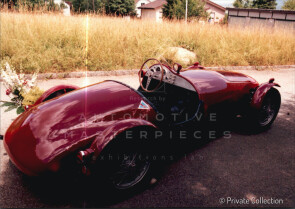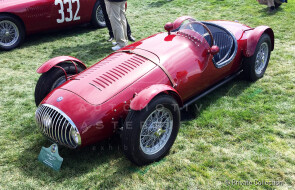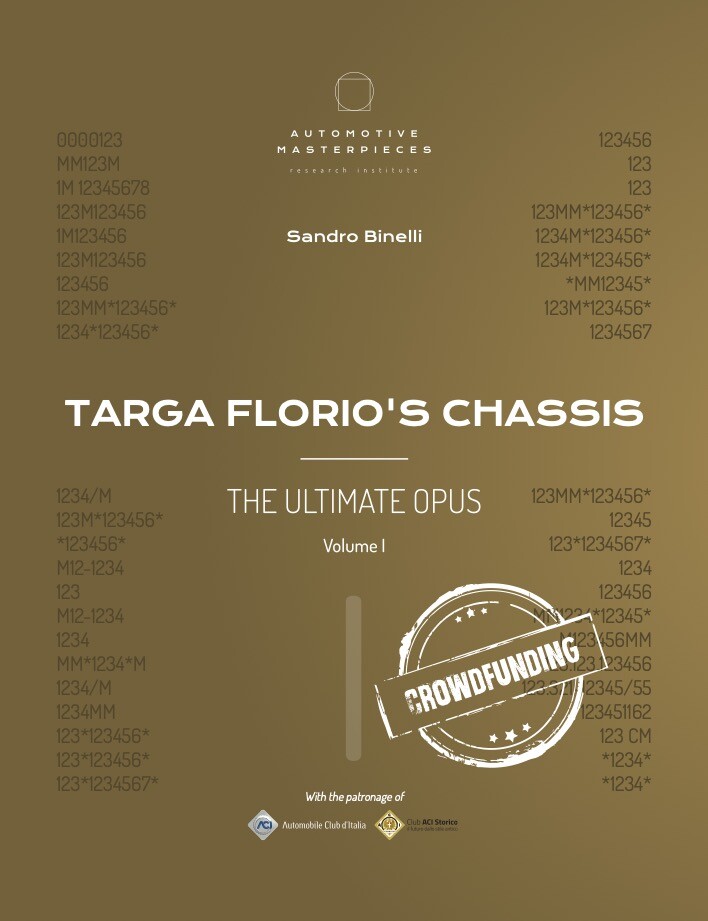
1948 O.S.C.A. MT4 1100
ON/OFF
Why am I an Automotive Masterpiece?
H. Works cars
O.S.C.A. (IT)
K. Famous chassis’ cars
The first chassis of O.S.C.A. MT4 built
L. Limited edition cars
1st built
In 1937 the three surviving Maserati brothers, Ettore, Ernesto and Bindo, sold out to the Orsi Group in Modena to avoid bankruptcy. The assignment contract included a ten-year consultancy for the Maserati brothers. After that period, in 1947, they decided to come back to San Lazzaro di Savena, near Bologna and found the Officine Specializzate per la Costruzione Automobili Fratelli Maserati S.p.A. – O.S.C.A. for short – to build limited edition competition cars. The Maserati brothers were real racers, and their little O.S.C.A.s built, were real racing cars, the ultimate expressions of a long line of outstanding cars that bore their name, beginning in 1926. O.S.C.A.'s first automobile was the MT4, for Maserati Tipo 4 cilindri. Their goal was to develop an automobile to compete in the 1100 cc racing class. The choice of a small displacement was due to financial reasons: two years after World War II, Italy was still economically prostrate, moreover, there were no sponsors or big car manufacturers behind them to support the development of the car. There weren’t and won’t be teams of engineers or technicians in the years to come: Ernesto Maserati is solely responsible for conception and design. Over the next eight years the MT4 was developed into the most successful under-1500 cc sports/racing car in the world. The chassis followed the lines of their A6GCS Maserati (the last model they designed before leaving the Maserati factory): a tubular frame with independent double A-arms front suspension and a live axle on the back. The 1092 cc engine had an alloy headed FIAT-derived block and the bodywork was built as a two-seater barchetta. Tested by the same Ernesto, the car made its racing debut in September 1948 driven by Gigi Villoresi who, against racers and cars of the highest level brought the small O.S.C.A. to victory. A young Veronese, Giulio Cabianca, bought an OSCA 1100. He began a very long series of successes and, then, more and more drivers will be driving an Osca. The brothers continuously developed the engine and created (for the MT4-2AD) their own aluminum-block engine design with twin cams and cc started to grow, from 1342 cc, to 1453 cc and then, finally, to the twin-spark 1491 cc variant. O.S.C.A. fit seven different versions of their alloy Inline-4 engine into the MT4, and all fell below the 1.5 liter mark. Of the around 200 O.S.C.A. cars produced, perhaps 80 were MT4s, and of the MT4s, records show 40 barchettas with Morelli of Ferrara bodies. There were other interpretations, of course, like the coupes of Vignale or Frua. But the most interesting aspect is that many MT4 were updated in the body with the years, even by artisans, to be always competitive in the races in which they participated. The MT4 was OSCA's most prolific model, but the company also produced a variety of models in both single and two-seater configuration fitted with four, six, and even twelve-cylinder engines, from 750 cc to 4500 cc.
The O.S.C.A. MT4 with chassis no. 1101 is the first example of this model produced in 1948. For this reason, it was probably not entrusted to external coachbuilders but was bodied in house as a red "siluro" with motorcycle fenders, as usual in the period for sports. The car was born with engine #1101 of the "MT4 1100" type and registered to O.S.C.A. itself in August. On the 15th of the month, it made its debut at the Gran Premio di Pescara with Franco Cornacchia at the wheel. It is the beginning of a long and brilliant career, which will alternate between glories, accidents, and even tragic events. The first success was achieved in September with Gigi Villoresi: 1st overall at the Gran Premio di Napoli. Chassis no. 1101 took part in many races and achieved success up to the 1949 Mille Miglia, again with Cornacchia: an excellent race ended prematurely by a broken valve. The 1949 season continued with mixed successes. In 1950 the car appears to take part in two races only, but its career continues. In 1952 the car became the property of the racing driver Armando François, who updated it to the new regulations with a barchetta body with integrated fenders, designed by the Fratelli Morelli and made it more competitive with an MT4-2AD engine. François drove it in many races, including at the Nurburgring, until May 8, 1955, when he had a terrible accident at the Circuito di Santa Gorizia which destroyed the rear part of the car. The pilot died shortly after due to his injuries. The car changed hands, was repaired and its career never stops. It continued to race with good results until 1962, then passed from owner to owner, and became an important part of vintage car collections. In a period yet to be specified, the car was restored, bringing it back to its pristine state, with the "torpedo" body and the original engine. In 1992, chassis no. 1101 received its Fiva pass and took part in its first Mille Miglia re-enactment. In 1996 made its debut at the Pebble Beach Concours d'Elegance, returning in 2018. From the 1990s to today, the car was increasingly featured in sector publications and books regarding the model and its sporting past as a star witness and in books of motorsport’s history, such as Mille Miglia's Chassis Volume III, published by Automotive Masterpieces. It will also be featured in the forthcoming Targa Florio’s Chassis, Coppa D’Oro delle Dolomiti Chassis and Giro di Sicilia Chassis books, all by Automotive Masterpieces.








